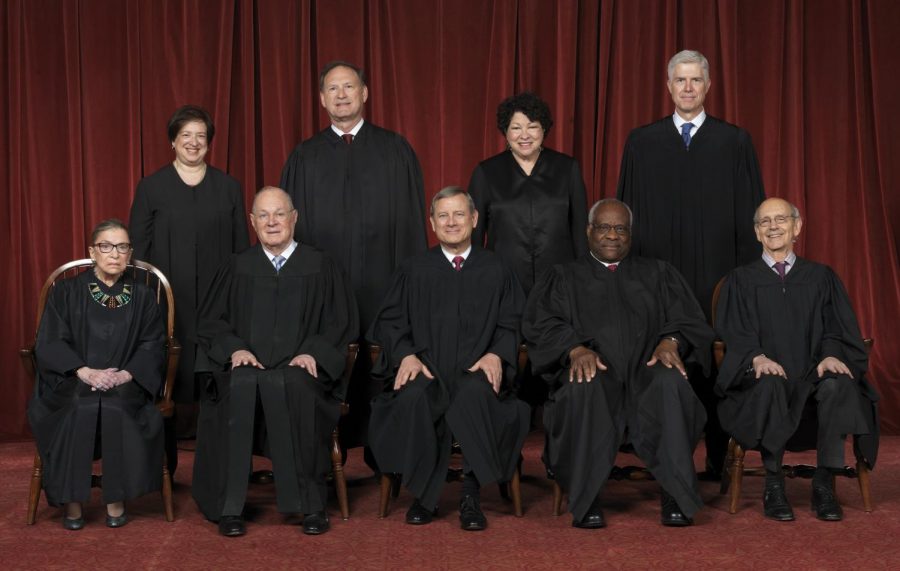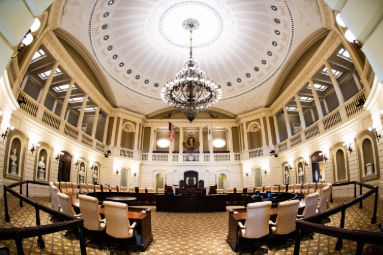Political Junkie; Confirming a Supreme Court Justice
Smiling for the official Supreme Court photo, Neil Gorsuch is introduced as an Associate Justice with his fellow court members. After every new nominee is confirmed, an updated official portrait of the Supreme Court is taken.
October 29, 2018
In the past few weeks the news has been filled with talk of Brett Kavanaugh, the new Supreme Court Justice that was nominated by President Donald Trump. The process of nominating and confirming a new Supreme Court member is a long but important one. Kavanaugh was nominated on July 9 and was confirmed on October 9. This was a total of 90 days. Nominees from the past 42 years with a confirmation vote from the senate waited an average of 67 days. This means that on average about 2 months go into choosing a new judge that will ensure our Constitution is being upheld. So what exactly does it take for someone to be chosen as a new Supreme Court Justice?
For starters, they have to be publicly nominated by the current president. This is usually after the president has talked with the Senate about their choice. Next, the Senate Judiciary Committee gives the president’s nomination a thought before holding a hearing for the nominee. It typically takes some time to gather the documentation needed for the hearing. After this, a hearing takes place for the candidate. Brett Kavanaugh finished his hearings on September 27. The purpose of these hearings is to help the Judiciary Committee decide on how they plan to vote. They question the nominee’s character and invite witnesses, both in support and opposition for the candidate, to present a case.
The next step, which was delayed for Kavanaugh due to an investigation on sexual assault allegations, is to vote on the nominee. Members of the committee must also send a recommendation to the Senate. They have three options: recommend a confirmation, suggest a rejection, or not give a recommendation by taking a neutral stance. The Senate uses these recommendations to debate the nominee in the sixth step. While filibusters are allowed during debates, the “nuclear option” approves only a 51% majority vote, rather than a ⅔ majority vote to help end it. This new procedure was introduced in April 2017 during Neil Gorsuch’s confirmation procedure. In the final step, the Senate votes on the nominee and reach a decision. Kavanaugh was confirmed with a 50-48 vote. Not included in this count was President Trump, who voted yes for Kavanaugh, and one senator not voting.
So why is this important? Supreme Court members serve a life tenure, meaning they remain a member until they die, retire, or are impeached. With such a long time justices spend checking laws to ensure they are constitutional, it’s imperative we choose them carefully. The process for admitting a new member is meant to be complex to ensure the nominee is a good choice. When asked about the confirmation process, sophomore Xavier Amaro said, “I think that we must have as much time as possible to ensure that this Justice will interpret the Constitution responsibly and without bias. I’m not saying this because Kavanaugh is Republican, but because being a Justice is a serious title that changes the lives of all 324+ million people in the US. It wouldn’t matter if he was Democratic or Republican. A longer, more detailed process for a Supreme Court Justice nominee would make sure that the Justice is fair and impartial.” Although some may think the procedure is unreasonably long, it helps American citizens in the long run.











